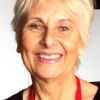The Voice: What does it mean for Indigenous health?
 Paula Goodyer
Paula Goodyer
Unpacking the Australian Indigenous Voice Referendum
What The Voice could have been...a compelling presentation from APD and Kamilaroi woman, Caroline Deen.
We might be a first world country but our track record on the health of Aboriginal and Torres Strait Islanders is dismal: life expectancy is 10 years lower than for non-indigenous people, chronic disease rates are higher - and now overweight and obesity, and type 2 diabetes are occurring in Aboriginal and Torres Strait Islander kids.
Developing strategies for better health with - not for - Indigenous communities
But it’s not a lack of well-meaning strategies to improve First Nations health that’s to blame - many strategies fail because of limited involvement of Indigenous people in their development, she points out.
“They’ve been done for Aboriginal people not with them and without following the correct cultural processes, either because it’s not clear what those processes are or because of lack of time,” says Caroline who has a Masters in Public Health and works in Cape York.
The Voice would make consultation with Aboriginal and Torres Strait Islander Communities easier, she argues, because it would provide a representative body for organisations to consult with. Importantly, by being written into the Australian Constitution, it would be permanent and protected from being axed by the government of the day.
Prioritising access to culturally appropriate nutrition or exercise programs.
“Members of The Voice would be chosen from diverse Aboriginal and Torres Strait Islander communities who’d consult with grassroots communities. So The Voice would be empowering, community-led, inclusive, respectful, and culturally informed,” says Caroline, adding that Indigenous representatives could argue for initiatives that prioritise access to culturally appropriate nutrition or exercise programs.
“Indigenous culture also holds valuable knowledge about traditional food practices, land management, and sustainable food systems so the Voice could also provide a way to preserve and promote these practices and the nutritional value of these foods.”
The Voice is more than a symbol
But it’s not just her words on Indigenous health that make good listening. She also provides a background to The Voice that includes slices of often shameful Australian history we didn’t always learn at school - like the attempt of Indigenous activist William Cooper to petition for Aboriginal representation in Parliament in 1933. Cooper - who later led a delegation to the German consulate in Melbourne to protest against violence towards Jewish people - spent years gathering signatures from Aboriginal people across Australia.
“The petition given to the Victorian government to send on was never sent - at the time they believed that Aboriginal and Torres Strait Islander people were a dying race.
“The Voice is more than a symbolic gesture,” Caroline emphasises. “It’s a pivotal opportunity for Australians to come together to contribute to a better future for Aboriginal and Torres Strait Islanders.”